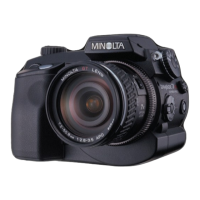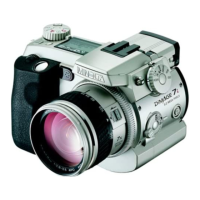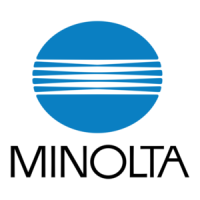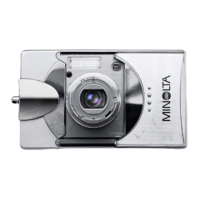96
R
ECORDING MODE MENU
When the spot-AE lock button is pressed and held, the exposure is locked. How the
spot-AE lock button operates and what functions it controls can be changed in the
advanced 1 section of the recording-mode menu (p. 80). If one of the AF/AE settings
are selected, the metering mode set with the function dial will be employed when the
spot-AE lock button is used.
SPOT AF/AEL
Recording-mode
menu setting
AF/AE hold
While pressing and holding the spot-AE lock button, the focus and expo-
sure are set and locked. These settings will remain in effect until the spot
button is released.
AF/AE toggle
Pressing and releasing the spot-AE lock button will set and lock the focus
and exposure. The settings are canceled when the spot-AE lock button is
pressed again.
AE hold
AE toggle
The camera’s default setting. While pressing and holding the spot-AE lock
button, the exposure is set and locked based on the spot metering circle.
This setting will remain in effect until the spot-AE lock button is released.
Pressing and releasing the spot-AE lock button will set and lock the
exposure based on the spot metering circle. The setting is canceled when
the spot button is pressed again.
The autofocus and auto-exposure settings will not reset after an image has been
captured until the spot-AE lock button has been released (hold setting) or pressed
again (toggle setting).
The AE hold or AE toggle setting can be used to active the slow-shutter-sync flash
mode in P or A exposure modes (p. 89).
When the camera is set to continuous AF, focus can locked when the spot-AE lock
button is set to AF/AE hold or toggle. If activated in the advanced 1 section of the setup
menu, Direct Manual Focus (p. 125) can be used with continuous AF when the focus is
locked.
DATA IMPRINTING
Data can be printed directly on the image. The imprinting function must be activated
before the image is taken. Once activated, data will continue to be imprinted until the
function is reset; a yellow bar is displayed behind the distance indicator and frame
counter on the monitors to indicate the imprinting function is active. Data imprinting is
controlled in the advanced 2 section of the recording-mode menu (p. 80). Data
imprinting cannot be used with super fine or RAW images or with UHS continuous-
advance drive mode.
No
YYYY/MM/DD
MM/DD/hr:min
Text
Text + ID#
Recording-mode
menu setting
Data imprinting function disabled.
Prints the year, month, and day the image was taken. The date format can
be changed in the advanced 2 section of the setup menu (p. 118).
Prints the date and time the image was taken. The date and time can be
set in the advanced 2 section of the setup menu (p. 118).
Up to 16 characters can be printed on the image. When this setting is
selected, the electronic keyboard will appear (p. 82).
Up to ten characters and a serial number can be printed on the image. As
each successive image is captured, the ID number will increase by one.
When this setting is selected, the electronic keyboard will appear (p. 82).
The serial number is reset every time the setting is made.
The data is imprinted in the lower right corner of the image when viewed horizontally.
Only one imprinting format can be employed at one time. The data is printed directly on
the photograph writing over the image information.
Every time a still image is recorded, it is stored with an Exif tag that contains the date and time
of recording as well as shooting information. This information can be viewed with the camera in
the playback or quick-view mode, or on a computer with the DiMAGE Viewer software.
Camera Notes
97

